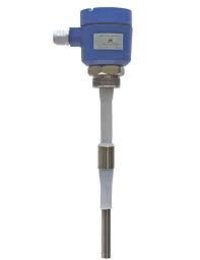RF conductor level controller is a level control instrument for detecting the level of liquid, solid particles, dust and other mixed slurry with adhesion in silo, tank or other containers. It can also be used to measure the interface between two different liquids, such as oil-water interface measurement.
The equipment has the advantages of simple and quick calibration, stable product performance, strong versatility of various models, easy installation and beautiful appearance. It can be widely used in petroleum, chemical, metallurgy, electric power, medicine, food, paper making, building materials and other industrial fields. And the controller can be used with PLC programmable controller or DCS centralized control system to realize automatic detection and automatic control of the process.
We have mastered the technical data of this product through reverse engineering, and can provide PCB design, PCB copy, chip decryption, prototype production, prototype debugging and other services to meet the needs of customers.
Working principle

- RF level controller uses high frequency technology to generate a low power RF signal from electronic circuit on the probe, the probe as a sensitive element, the signal change caused by the change of level feedback to the electronic circuit; the signal amplitude and phase after comparison with the reference signal processing, drive the output circuit to issue an alarm signal, so as to detect the presence of materials in the silo.
- RF conductivity level controller adopts three-terminal Cote -Shield technology, which can greatly reduce the influence of material adhering to the detection pole rod on the control role. The high frequency signal generated in the electronic circuit is sent directly to the shield end of the detection electrode, and the other way is sent to the detection electrode through the compensation link and voltage follower.
The other way is sent to the detection electrode through the compensation link and voltage follower. As the two groups of signals whose size and phase are basically the same. Therefore, when there is material adhering to the probe, because of the capacitance between the protective sleeve and the wall, so the high-frequency signal added to the protective sleeve will make the capacitance tend to saturate, so that the high-frequency signal on the probe can not flow into the container wall through the adhering layer, when a large amount of material in the container contacts the probe, the current on the probe flows around the saturation area to the container wall, so as to produce the signal of the presence of material.
Main technical parameters
Working power: 24VDC; 220VAC
Relative humidity: ≤85%
Output signal: two sets of normally open and normally closed contacts
Contact capacity: AC220V, 5A; DC24V, 3A
Ambient temperature range: -40℃~+60℃
Medium temperature: -180℃~+500℃
Delay time: 0.2S (0.2~30S adjustable)
Protection level: IP65
Probe material: 316 stainless steel, tetrafluoroethylene, high temperature plastic, ceramic
Explosion-proof grade: ExdIIBT4
Connection: 3/4″ NPT thread; 3/4″ pipe thread; flange (optional); 1 -1/ 2″ pipe thread
Installation method: top-mounted, side-mounted